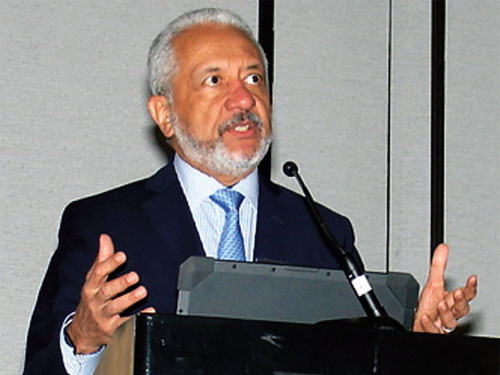Page 1: Canal Facing Water Woes
Page 2: Pacts Seen Boosting Trade
Page 4: Box Trade Challenged
Page 5: Florida Leading in LNG
Page 6: Labor Must Be ‘Reskilled’
Page 7: ‘Losers’ Make for ‘Winners’
When Richard Wainio, then port director of the Port of Tampa, orchestrated the American Association of Port Authorities’ inaugural Shifting International Trade Routes Workshop, held in 2008, the big issue on the horizon was preparing for completion of Panama Canal expansion in 2014.
Wainio, a former Panama Canal executive, is now semiretired, having left the port in 2012, and is doing a little consulting and cruise ship lecturing. He scarce could have imagined the gamut of challenges facing maritime shipping today, including climate-change-related concerns such as a shortage of fresh water to maintain Panama Canal operations and a demand to greatly reduce air emissions from increasingly large vessels that put pressure on still-neglected aging port infrastructure.
Add in a host of geopolitical and economic issues, from uncertainty about impacts of newly inked U.S. trade agreements with China and North American neighbors to anticipated slowing of global fiscal growth, plus the effects of sweeping technological advances and mounting Wuhan coronavirus threats, and participants in the AAPA’s 13th annual Shifting Trade Conference (as now renamed), hosted by Port Tampa Bay (as renamed as well), had plenty over which to mull 3 1/2 years after the belated mid-2016 opening of the expanded Big Ditch.
Canal Facing Water Woes
Among the A-list speakers addressing the Jan. 29-30 gathering at the Tampa Marriott Water Street was Dr. Ricuarte Vásquez Morales, who took over as Panama Canal Authority administrator last September.
“The interoceanic waterway has improved world trade, transportation and connectivity by reducing times, distances and costs between production and consumption centers,” said Vásquez, who holds his doctorate in managerial economics. He noted that, of the record 252.4 million gross long tons of cargo transiting the canal in the fiscal year ended last September, 67.1 percent originated or ended up in the United States.

But, he said, despite the record traffic, the Panama Canal and maritime shipping as a whole face a myriad of geopolitical, economic, technological and environmental tests.
Most immediately, Vásquez said, global warming is causing rapid evaporation of lakes that feed the canal, making it difficult for there to be sufficient fresh water between locks to reliably support vessel transits.
“We need a solution, or otherwise we’re going to lose business permanently,” he said, adding that the fresh water surcharge to take effect Feb. 15 is far from a permanent answer. Various options are being explored, including possibly buying another water-source lake to augment Gatun Lake, “if the price is right,” said Vásquez, who estimated a cost of $2 billion over the next four to five years in order to ensure a sufficient water supply.





